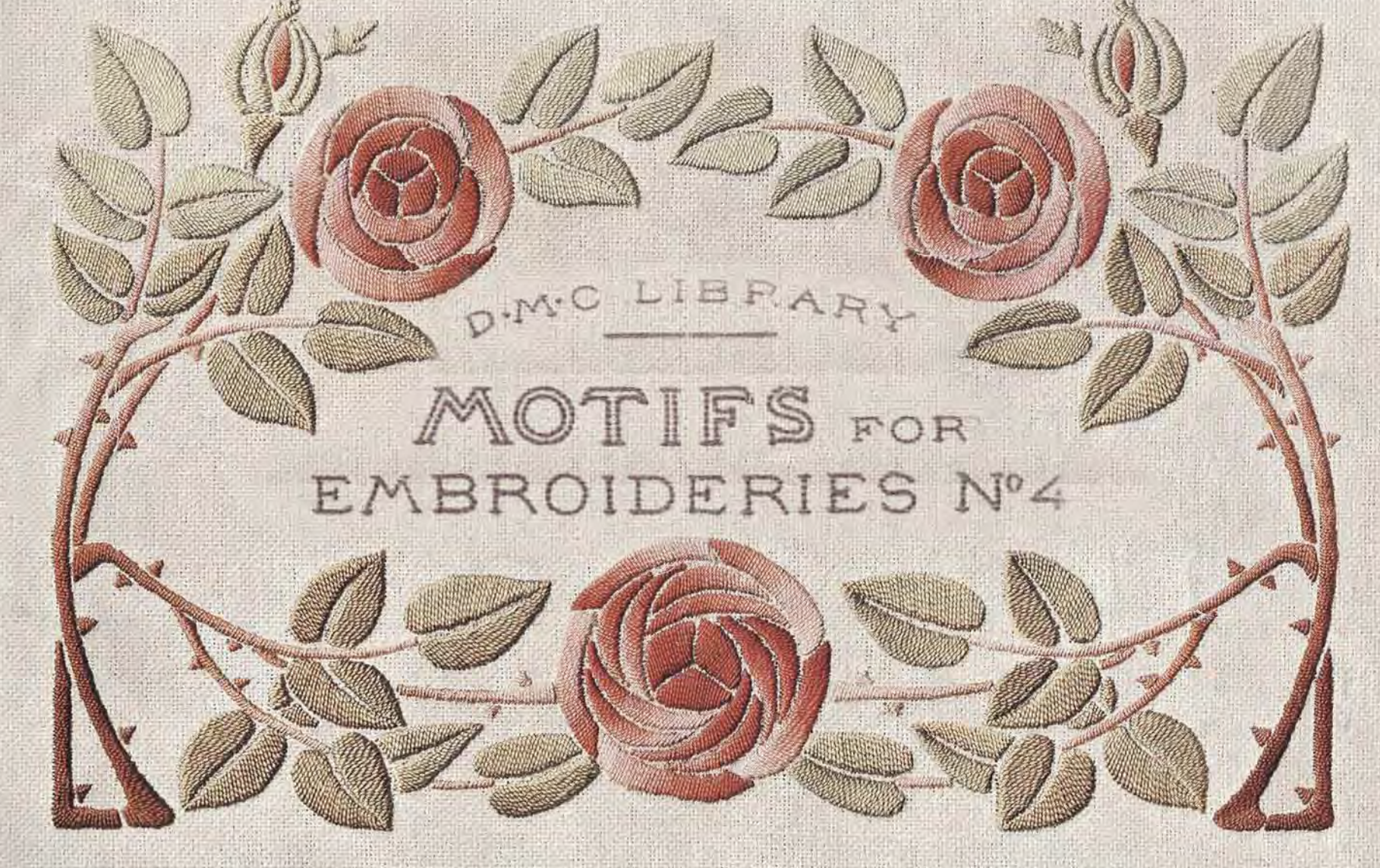Overview of Historical Embroidery Styles, Part 5
In the last post, I left off with the invention of machine embroidery during the Industrial Revolution. By the mid-1800s, there were advancements in practically every area of textile production – printing, weaving, knitting, dyeing, lacemaking – as well as the invention of the sewing machine. New textiles were becoming available to more people at a rapid pace.
1840s-1880s
From the 1840s to the 1880s, embroidery on clothing took a back seat to the border prints, machine lace, aniline dyes, and other new textiles that were cropping up. You’ll still see the occasional embroidered waistcoat through the 1840s and 50s, but by the 1860s they are all but gone. During this period, embroidery is most often found on petticoats, accessories, christening gowns, children’s clothing, and household items. Even though embroidery wasn’t common on gowns, however, there are always exceptions.
A boldly embroidered men’s vest, c. 1845-59. The Met, 2009.300.2688.

Machine Embroidery
The industrialization of embroidery hurt the hand embroidery business, but also made embroidery available to the masses. By the 1880s, dry goods catalogs carried a wide range of embroidery edgings and insertions for making gowns and undergarments at home. With the exception of a few novelty goods, the embroidery designs on these fabrics and trims have not changed significantly from the whitework designs being published in magazines when the machines were first invented. Similar designs are still produced today.
Machine embroidered dress yardage available by mail order in 1883.

Embroidered ruffles on a petticoat, c. 1883. Based on the date and the uniformity of the design, I’d venture a guess that this is machine embroidered yardage.The Met, 2009.300.2989a,b.

Mailorder Goods
As we head into the 1880s, embroidery is back, helped along by mail order catalogs that advertised embroidered gowns, accessories, and trims that could be delivered right to your door. In addition to the always-popular white on white cotton trims, other fabrics and colors were available.

For example, this embroidered gown was available in all-wool nun’s veiling with silk embroidery, with “a choice of light or dark colorings, including black.”
All-white gowns gain popularity in the 1880s, many of which make extensive use of machine embroidery. These designs still rely heavily on the use of borders, as we saw in earlier machine embroidery designs. By 1900, these heavier, structured gowns give way to delicate lingerie gowns and embroidered blouses. These white garments often combined tucks, ruffles, and hand embroidery with edgings and insertions of Swiss embroidery and French lace. They ranged from quite simple to incredible, frothy confections, and remained popular into the 1910s.
Art Needlework
In the 1870s and 80s, there was a push to revive old styles of needlework from previous centuries. This revival was termed Art Needlework and included freehand embroidery and shading techniques in silk threads. It was a sharp contrast to Berlin Wool Work and other popular counted needlework styles of the era.
In 1872 the School of Art Needlework was founded in South Kensington, now known as the Royal School of Needlework. In 1877, the Society of Decorative Art was founded in New York. The aim of both schools was not only to revive a disappearing art form, but also to train women in marketable skills. The mission of the School of Art Needlework was described as a desire to “restore ornamental needlework, for secular purposes, to the high place it once held among decorative arts, and to supply suitable employment for poor gentlewomen.”
Many needlework books were published in these decades, standardizing the terminology of embroidery to use many of the same terms still used today. Some of these can be found under the term Kensington Embroidery, which included stem stitch, long and short stitch, and other common stitches.
18th Century Revival
When the late 19th century brought the late 18th century back into fashion, not only did they reinvent the polonaise gown, they drew inspiration from richly embroidered 18th c. court suits. However, this time women got to wear them. Designers like Pingat created gowns that were essentially an elongated coat and waistcoat with all the details of 18th c. menswear, worn over the ruffled underskirt common to designs of the era.
It’s not much of a jump from this 1883 fashion plate…

…to this Pingat gown from 1888, which strongly resembles an 18th c. court suit. The Met, 2009.300.7758a,b.

Similarly inspired designer pieces can be found through the early 1900s. Up close, the embroidery on this gown could easily be mistaken for an 18th c. men’s court suit. But when you zoom out, it’s an 1890s evening gown by Jeanne Hallée. Previously in the collection of the Met Museum.
Beetle Wing Embroidery
One unusual style of embroidery that grew in popularity during the 19th century was the use of jewel beetle wings as the base of a design, often outlined with Gold Work. These beetle wings are lightweight and beautifully iridescent, but also very sturdy. Most often you’ll see them used in leafy, floral, or paisley-inspired designs. This trend spans most of the 19th century, with examples from the 1820s to 1890s and beyond.
1860’s Beetle wing stole and bodice. The Met, 2009.300.7828.

Multi-Media Embroidery
The couture houses of the late Victorian and Edwardian eras incorporate embroidery into many of their designs, but it often plays more of a supporting role than a starring one. You might see a few embroidered flowers or leaves tucked in among Gold Work, beads, ribbons, lace, and various forms of fabric manipulation. It’s as though designers are driven to take every embellishment technique seen thus far and combine them all into one gown. It is the Gilded Age, after all!
A c. 1891 jacket that dramatically combines velvet, fringe, beading, and embroidery. LACMA, M.2007.211.38)

Naturalism and Exoticism
Embroidery was also used to reflect the fascinations seen in the art and literature of the time. People were enamored with nature and the world around them, and so you’ll find wheat sheaves, bugs, and graceful Art Nouveau flowers worked in silk thread. Tales of exciting, far off lands inspired Oriental- and Egyptian-themed embroidery on dressing gowns, evening gowns, and accessories. Embroidered textiles, accessories, and dressing gowns were imported from around the world, blending Eastern motifs with Western styles. This trend continued well into the 1900s.
On the surface, Exoticism appears as simple fascination with or admiration for the unfamiliar. However, it has deeper, more troubling roots in Western imperialism. Exoticism relies on the viewpoint that the West is “normal,” while everyone else is “other.” Foreign art and culture were appropriated to create stereotyped fantasies for European consumption, while their lands were being colonized. These cultures were often viewed as “backwards” or “primitive,” while at the same time being touted as morally superior for being “quaint” and “uncorrupted.”
Many extant garments feature artistic elements from other cultures, embroidered on distinctly Western shapes. For example, this is just a run-of-the-mill white Edwardian gown, until you take a closer look at the embroidery. The Met, 2009.300.7156.

The late 1800s brought embroidery to the masses, while at the same time making the work of many highly-skilled embroiderers obsolete. The Art Embroidery revival brought these skills back into the public eye, but will it last? In the final installment, I’ll take a look at how this continues into the 1900s.
What is your favorite example of late 19th century embroidery? Are you a fan of whitework, or the more elaborate creations of the couture houses? I’d love to hear your thoughts!
Resources:
- Check out Part 1, Part 2, Part 3, and Part 4 of this series.
- Please see my Pinterest boards for more examples of these styles.
- If you liked this brief overview, my online class covers the history of embroidery styles from 1500-1950, including more examples not shared here.
Books:
- Thread Painting and Silk Shading Embroidery: Techniques and Projects*
- 18th Century Embroidery Techniques*
- 19th Century Embroidery Techniques*
- The Ladies’ Work Table: Domestic Needlework in Nineteenth Century America. Borrow for free at Archive.org.
*Some of the links above are affiliate links, meaning, at no additional cost to you, I will earn a commission if you choose to make a purchase. These are marked with an * after the product name. I only recommend products or services I use personally and believe will add value to my readers, and I do not recommend products solely to get a commission.





 Previous Post
Previous Post Next Post
Next Post
